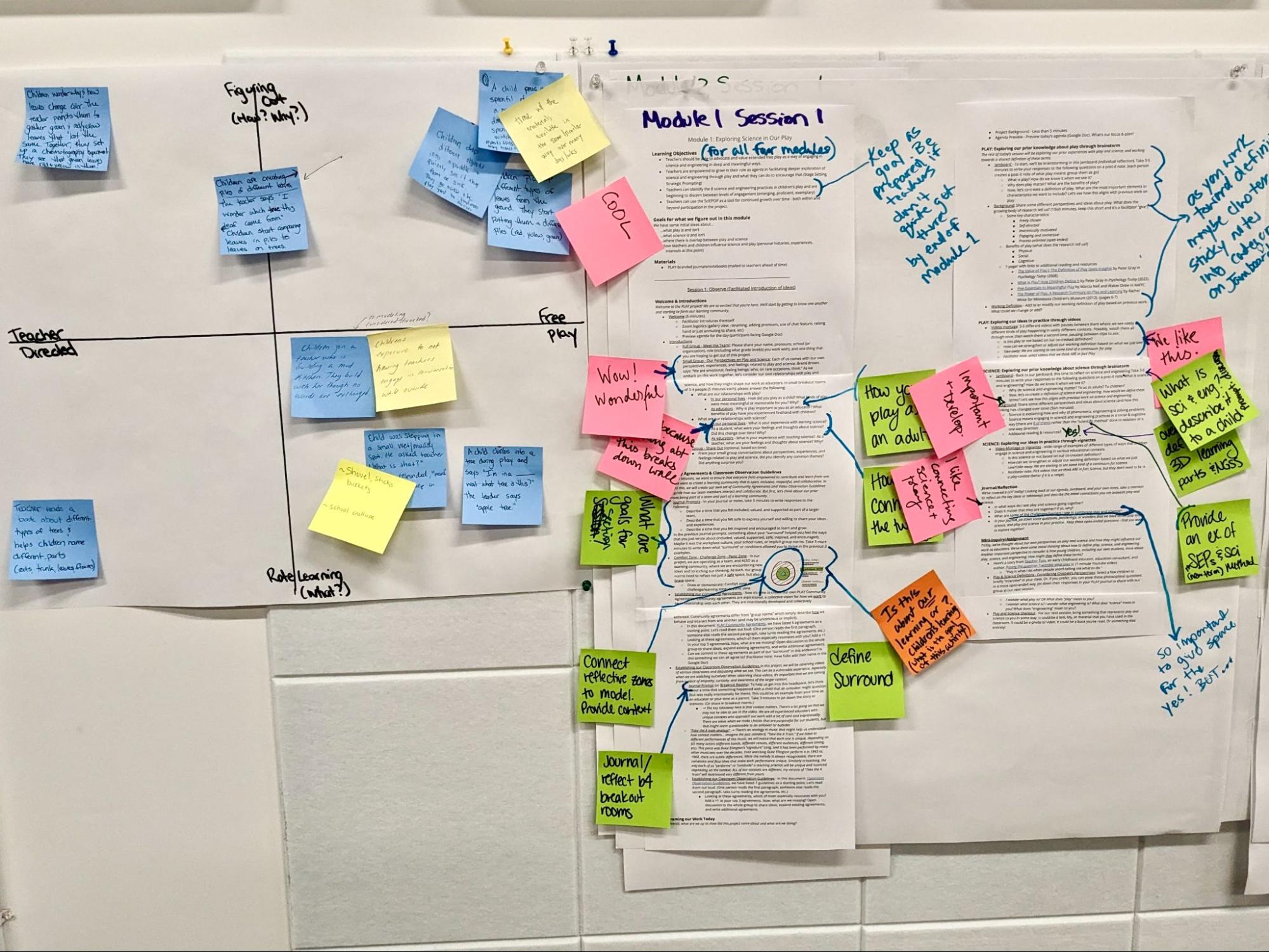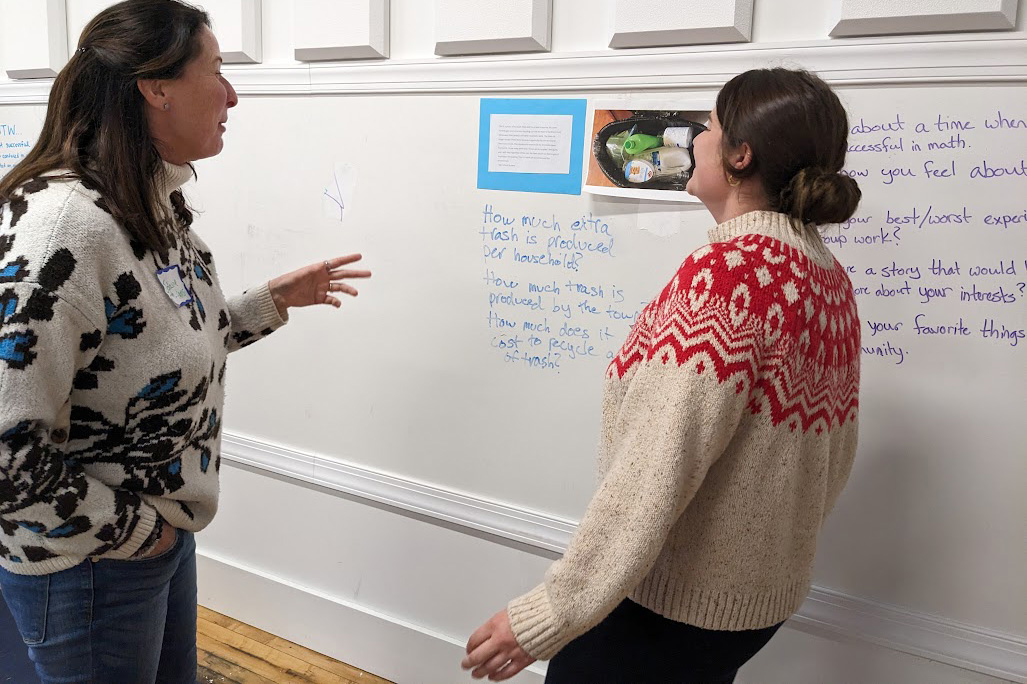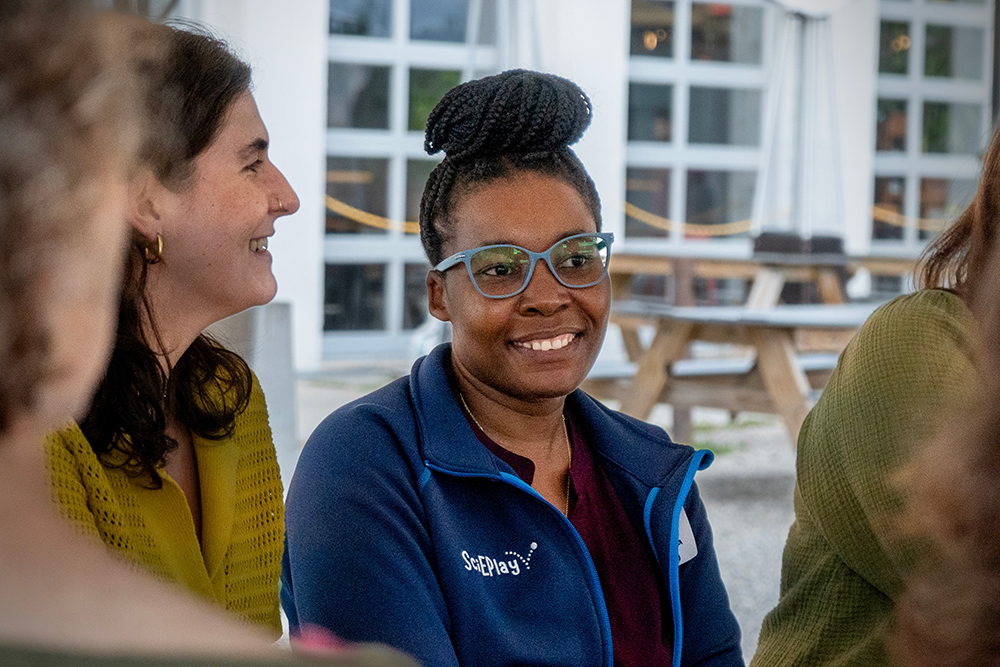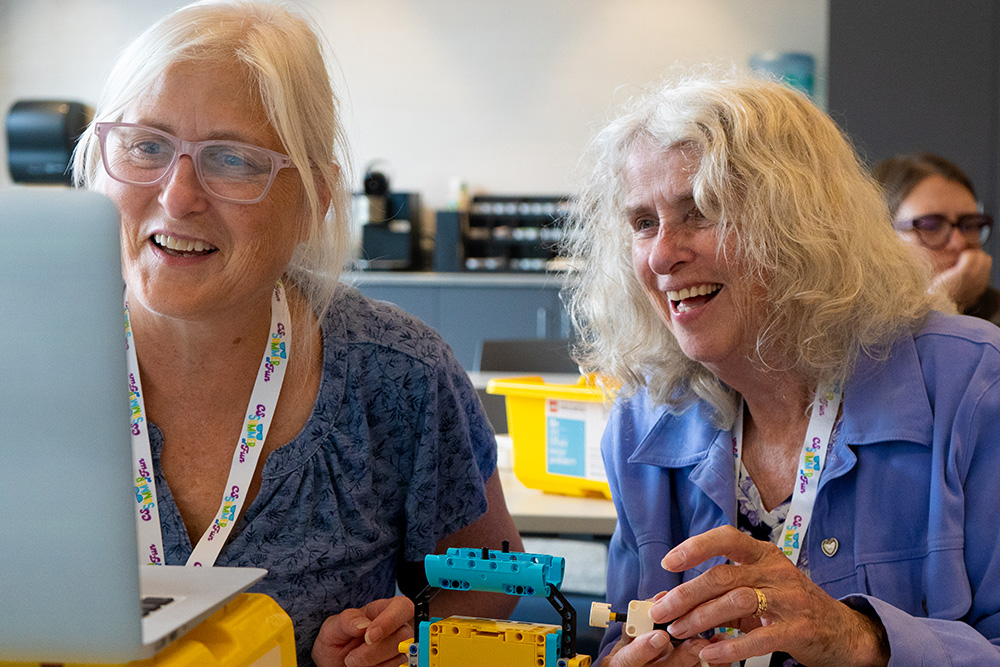How do you design a 2-year professional learning series focused on play-based science? You need a clear vision, careful planning, and collaboration with key stakeholders. For the SciEPlay project, it starts with a dedicated team of STEM education specialists, researchers, and early childhood educators.
Over the past three years, the SciEPlay team has developed a suite of professional learning materials including 18 sessions, 50+ videos, handouts, and other resources. Our goal is to help early childhood educators recognize and support Science and Engineering Practices (SEPs), a critical but often misunderstood component of the Next Generation Science Standards.



We have been continually developing, testing, and revising our professional learning materials since the project started back in 2022. The materials have evolved significantly from their original form, based on feedback from our partners and participants. In the research world, we call this approach “design-based research” (or, “DBR” for short). Design-based research is a cyclical process that involves:
- Identifying a problem: Researchers pinpoint a specific learning challenge or need within an educational context.
- Developing a solution: Based on existing research and theory, they design and implement an innovative intervention (e.g., a new teaching method, a technology tool, a curriculum unit).
- Testing and refining: The intervention is put into practice in a real-world setting, and researchers closely observe and collect data on how it’s working.
- Iterative improvement: Based on the data collected, the researchers analyze and refine the intervention. This might involve making adjustments to the design, materials, or implementation.
- Sharing and disseminating: The findings and insights gained from the research are shared with the broader educational community to inform practice and future research.
In essence, design-based research is a dynamic and flexible approach that allows researchers to develop innovative solutions to educational challenges. It tackles real-world problems through ongoing cycles of design, implementation, and refinement. In the case of SciEPlay, DBR involves close collaboration with our partners from Samara Early Learning, Bowdoin College, Inch by Inch Preschool, and Bowdoin College Children’s Center.
To learn more about the SciEPlay project and our impact on early STEM education, watch our intro video, visit the project webpage, or connect with us at an upcoming conference! We’ll be presenting at ASTE, NARST, NSTA, and MMSA’s STEM PD Retreat. Follow MMSA on social media to stay up-to-date on the latest news and developments (Facebook, Instagram, and X /Twitter).







